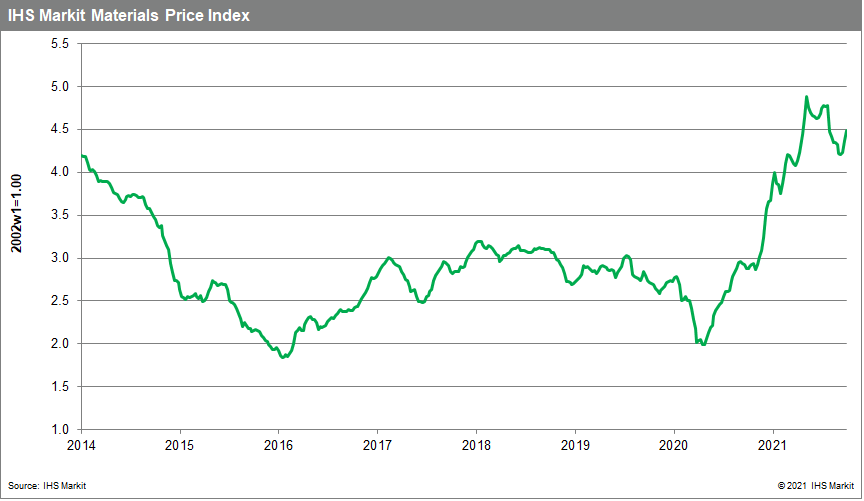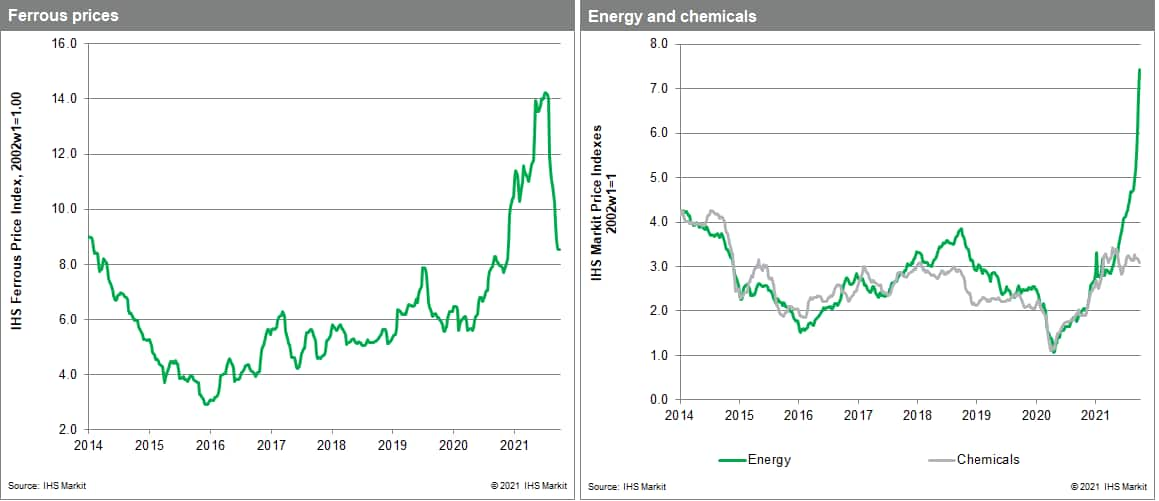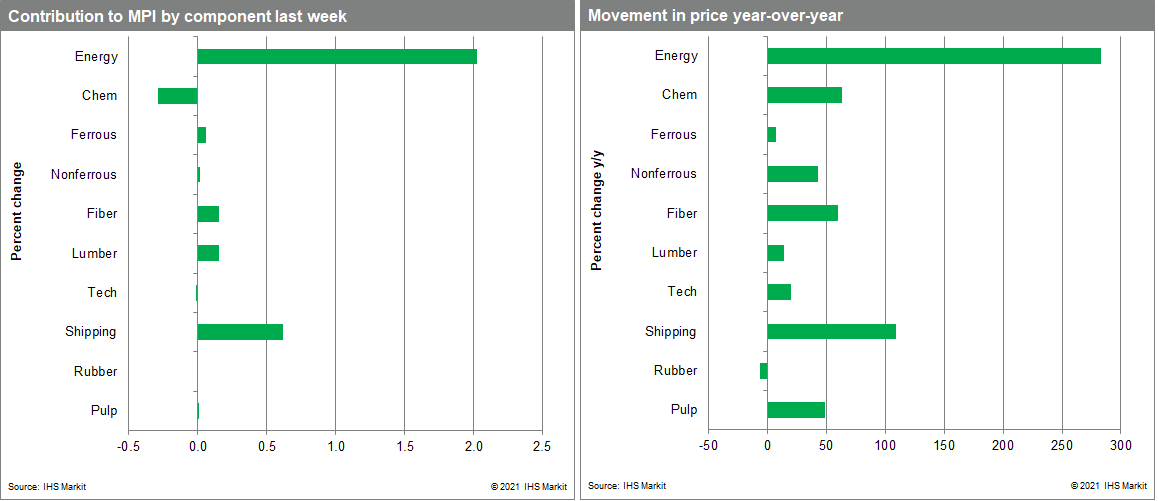Weekly Pricing Pulse: Record energy prices send commodities higher once again
Our Materials Price Index (MPI) increased 2.7% last week, its third consecutive increase. Prices rose broadly with seven of the ten MPI sub-components climbing last week. This latest move means commodity prices stand 57% higher than this time last year.

Soaring energy prices were again the catalyst for higher commodity prices last week. Coal, natural gas and oil prices have all been rising rapidly in recent weeks and this is impacting top-line commodity price movements. Our energy sub-index climbed 8.3% last week, following a 13.8% increase the previous week. The UK spot landed price of liquefied natural gas (LNG) climbed to $36/MMBtu, a historic high, while the Japanese spot landed price for LNG rose $8 for the week to reach $40/MMBtu, also a record. Brent crude also continued its upward move and settled above $80/barrel for the first time since October 2018. Freight costs were another contributor to last week's upward move. Shipping costs have remained stubbornly high over the past year and our freight index surged 13.2% last week. Port congestion in China has caused freight rates on the main trade routes for iron ore to spike significantly. The congestion has been driven by COVID-19 restrictions at ports, as well as COVID-19 outbreaks on land and vessels. With tight conditions in energy markets entering winter and elevated charter rates expected to last well into 2022, commodity price inflation will persist through much of the near term.

The increase in the MPI coincides with signs of slowing growth and continuing high inflation, i.e., stagflation. IHS Markit analysts estimate that US GDP growth slowed from 6.7% in the second quarter to just 1.4% in the third quarter. Another worry is disruptions in mainland China's industrial sector tied to mandated cuts in electricity use. Since it has been mainland China's manufacturing sector that has provided the one reliable supply base for goods industries globally during the pandemic, problems here when added to tangled state of global shipping could make for a dismal holiday season. Watch chemical prices in the weeks ahead. Chemical markets have been seeing some improvement, with better balances between supply and demand softening prices for some products, something IHS Markit has been hoping to see in other industries as a sign bottlenecks are being resolved. However, with higher energy prices lifting feedstock costs and with cuts being seen in mainland Chinese production, price increases may soon be inevitable, a change that would signal fresh strength in the MPI across the fourth quarter.

